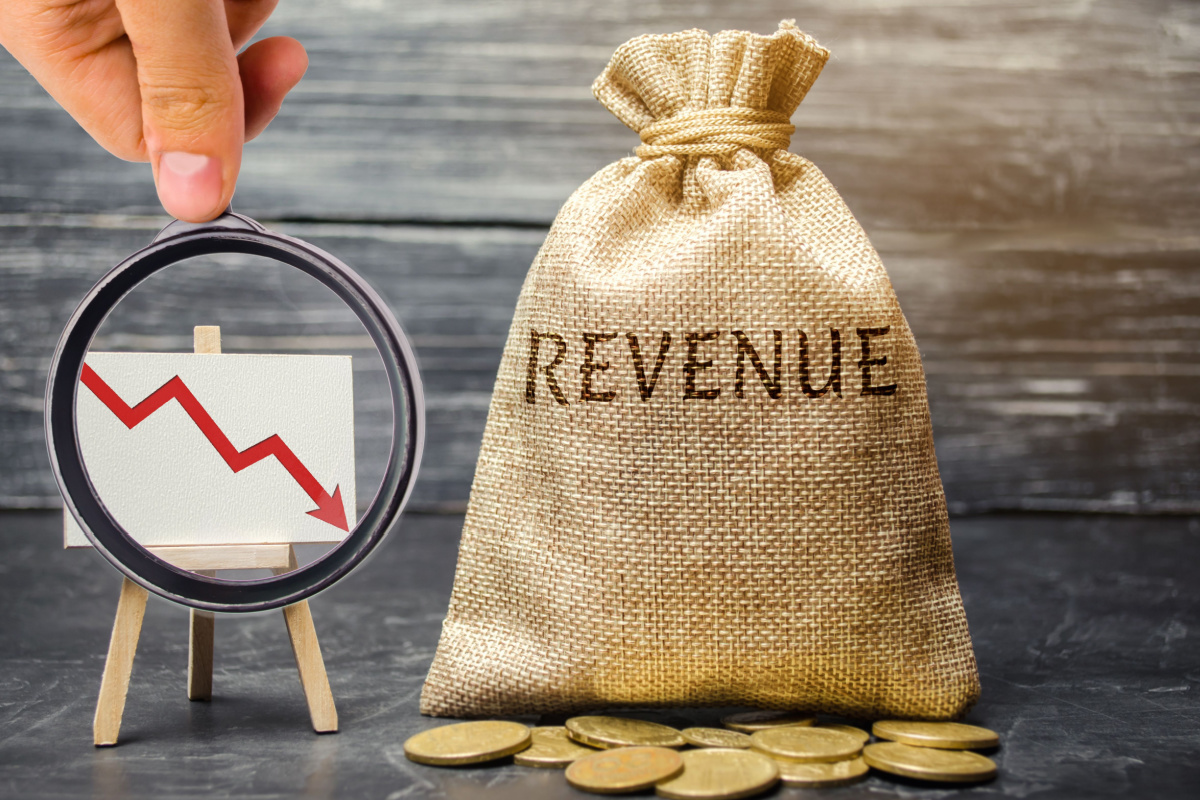Benjamin Franklin once said, “Without continual growth and progress, such words as improvement, achievement, and success have no meaning.” This rings especially true in the business realm, where revenue growth isn't just a metric – it's the heartbeat of success.
In this guide, we'll explore the formula for calculating this critical metric and offer tangible strategies to boost your organization's revenue. Step into a world where progress is measured and success is achieved.
Revenue growth is the increase or decrease in a company's total sales or income over a specific period. It measures how much the company's revenue has grown or decreased from one period to another.
 Positive revenue growth indicates that a company is accelerating sales and income generation, reflecting strong demand for its products or services and successful efforts to expand its customer base and satisfy existing customers.
Positive revenue growth indicates that a company is accelerating sales and income generation, reflecting strong demand for its products or services and successful efforts to expand its customer base and satisfy existing customers.
On the other hand, negative revenue growth raises concerns as it suggests challenges in generating sales or declining customer demand. This could be attributed to market saturation, intensified competition, economic downturns, or ineffective business strategies.
Use revenue growth to monitor your business. As a successful business owner, you must first know how to calculate it accurately. The steps to calculate revenue growth are as follows:
Change in Revenue = Final Revenue - Initial Revenue
For example, if an initial revenue of $500,000 at the beginning of the quarter increased to $600,000 at the end of the quarter, the change in revenue would be $100,000.
Revenue Growth Rate = (Change in Revenue / Initial Revenue) * 100
Using the previous example, the revenue growth rate can be calculated as follows:
Revenue Growth Rate = ($100,000 / $500,000) * 100 = 20%
This means that the revenue grew by 20% during the specified period.
A decrease in revenue growth for a business can be caused by various factors, including market saturation, economic downturns, pricing pressure, or product or service issues.
These factors can combine or vary depending on the industry and individual business circumstances. Let’s take an in-depth look at each of these causes:
Market saturation means there is an abundance of competitors offering similar products or services. Increased competition can make it challenging for a business to stand out and attract customers.
 For example, let's consider a boutique clothing store. When the store opened, it may have enjoyed steady revenue growth as it catered to a specific niche market. However, over time, if more and more clothing stores with similar offerings open in the area, the market becomes crowded with numerous options.
For example, let's consider a boutique clothing store. When the store opened, it may have enjoyed steady revenue growth as it catered to a specific niche market. However, over time, if more and more clothing stores with similar offerings open in the area, the market becomes crowded with numerous options.
With similar products and pricing, attracting new customers or retaining existing ones becomes a challenge. As a result, revenue growth can slow down if the business cannot capture a share of the market.
Economic downturns typically result from decreased consumer spending, declining business investments, inflation, and global economic declines. As a result, consumer buying power diminishes, and individuals become more cautious with their spending. This change in consumer behavior can slow revenue growth across many industries.
For example, hotels and restaurants may experience a decline in customer demand during an economic downturn. With tighter budgets, individuals may cut back on leisure activities and opt for more cost-effective alternatives. As a result, these businesses may witness a decrease in bookings, occupancy rates, and, thus, overall revenue.
Pricing pressure occurs when businesses face intense competition or encounter shifts in customer needs that place downward pressure on prices. This pressure often arises when customers have more affordable options to choose from or when their willingness to pay decreases. Businesses may be compelled to lower their prices to attract and retain customers, which can directly impact their revenue growth.
Changes in customer preferences can also contribute to pricing pressure. As consumer tastes and preferences evolve, they may prioritize different features and attributes in the products or services they purchase. If businesses fail to adapt and meet these changing preferences, they may lose customers to competitors who offer better value propositions.
When customers experience quality problems or encounter issues with products or services, it can lead to a decrease in sales and a decline in revenue. Negative customer experiences, such as poor performance, defects, or inadequate customer support, can result in dissatisfied customers who may take their business elsewhere.
 In some cases, product recalls due to safety concerns or regulatory non-compliance can damage a brand's reputation and erode customer trust. When customers lose confidence in a business due to product or service issues, they may hesitate to make repeat purchases or recommend the brand to others. This can lead to a decline in customer loyalty and reduced word-of-mouth referrals, which are drivers of revenue growth.
In some cases, product recalls due to safety concerns or regulatory non-compliance can damage a brand's reputation and erode customer trust. When customers lose confidence in a business due to product or service issues, they may hesitate to make repeat purchases or recommend the brand to others. This can lead to a decline in customer loyalty and reduced word-of-mouth referrals, which are drivers of revenue growth.
Additionally, the associated costs of managing recalls and addressing the underlying issues can further strain a business's finances and impede revenue growth.
When learning the ins and outs of revenue growth, it’s natural for some questions to arise. We have compiled a list of frequent queries on the topic.
Determining a specific percentage for a good revenue growth rate is challenging as it varies greatly across industries and businesses. However, a commonly cited benchmark for healthy revenue growth is typically around 10% to 20% per year. However, this range is not universally applicable, and businesses should consider their unique circumstances.
Sales and revenue are not the same but are closely related. Sales refers to the amount of products or services sold by a business within a specific period and the total value accrued from customer purchases.
Revenue is the total amount of money a business generates from its sales and other income sources, such as interest, royalties, or fees. Revenue encompasses all inflows of assets resulting from the business’s core operations.
If revenue decline persists over a significant period and deviates from your business expectations or industry norms, it may indicate underlying issues that require attention. Watch out for consistent drops below your projected targets or historical performance.
While specific thresholds drastically vary across industries, a revenue growth rate below 2% to 5% would generally be considered low.
Revenue growth is not just a metric but a reflection of a company's ability to innovate, meet customer needs, and create value. So, by implementing strategies to enhance sales, adapt to market dynamics, and prioritize customer satisfaction, companies can achieve sustainable growth and long-term success.